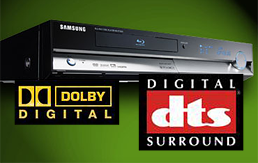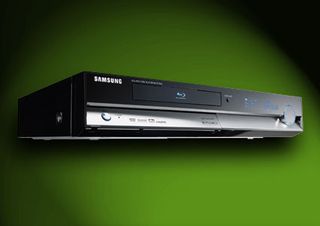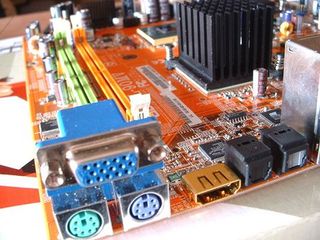Mastering HD PC Audio, Part 1
Add Blu-ray to a PC, and out comes high-def audio, right? Alas, the answer is actually "maybe yes, maybe no." Read on to find out why.

You Can’t Always Get There From Here

When it comes to handling high-definition audio from a Blu-ray player in your PC, you might be inclined to believe that HDMI capability in the motherboard or on a graphics card automatically enables you to output high-definition, high-bandwidth audio formats such as Dolby Digital Plus, DTS-HD High Resolution, Dolby TrueHD and DTS-HD Master Audio. Except for a few interesting possibilities, however, in most cases you’d be dead wrong. Even relatively new, HDMI-equipped high-end motherboards, graphics cards, and sound cards may not be able to accommodate such higher-bandwidth data streams natively. It all comes down to what kinds of inputs they can accept, and what sorts of outputs they are able to emit.
Readers who return to this story will notice it’s been changed since it was originally posted. Thanks to my occasional collaborator, and full-time HTPC maven, Matt Wright, we’ve made numerous corrections and additions to this story, which should hopefully result in its improved usability for our readers, not to mention avoiding additional confusion when there’s already plenty to go around!
We take a look at these audio formats and their bandwidth and delivery requirements in this story. In Part 2, we proceed to examine how digital audio streams may be handled (or not) inside typical PC components. You should walk away from both of these stories with a profound appreciation of why so many home theater PC users end up using multiple analog cables — three for 5.1 sound or four for 7.1 sound — instead of HDMI to ferry multichannel sound where they want it to go. Hopefully, you’ll also begin to understand some of the trade-offs inherent in converting from digital to analog inside a PC instead of in your receiver or pre-amp, if that ends up as the most workable option for realizing the best possible multichannel surround sound experience. And finally, you may learn why it might be worth waiting just a little bit longer to put together a home theater PC with a Blu-ray player as part of your entertainment center; this will let you take advantage of some new hardware capabilities that should be available before 2008 comes to an end, but is not quite ready yet (at least, as I write this story).
Here in Part 1, you’ll find the following elements explored and explained:
- Blu-ray audio formats: This includes Pulse Code Modulation (also called PCM, or sometimes LPCM for the Linear PCM implemented in most audio gear), plus three types of Dolby (Dolby Digital, Dolby Digital Plus, and Dolby TrueHD) and the DTS (DTS, DTS-HD High Resolution, and DTS-HD Master Audio) formats.
- The bit rate (or bandwidth) associated with each format, along with the number of channels, sampling frequencies, and bit depths used to encode the formats.
- Whether or not an SPDIF connection can accommodate the bit rate for each format, and which types of HDMI connectors the format works with.
In Part 2, we look at PC software codecs to describe what formats they can handle, and examine the types of connections that HDMI equipped motherboards, graphics adapters, and sound cards can accommodate. And because new chipsets and connections have recently become available (or will be available relatively soon) we also explain how new and upcoming hardware may someday provide simpler solutions to the sad, sorry, and sometimes confusing state of high-definition PC audio as we know it today.

Sign up to get the BEST of Tom’s Guide direct to your inbox.
Upgrade your life with a daily dose of the biggest tech news, lifestyle hacks and our curated analysis. Be the first to know about cutting-edge gadgets and the hottest deals.
Current page: Mastering HD PC Audio, Part 1
Next Page Understanding High-Definition Audio